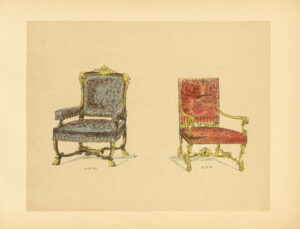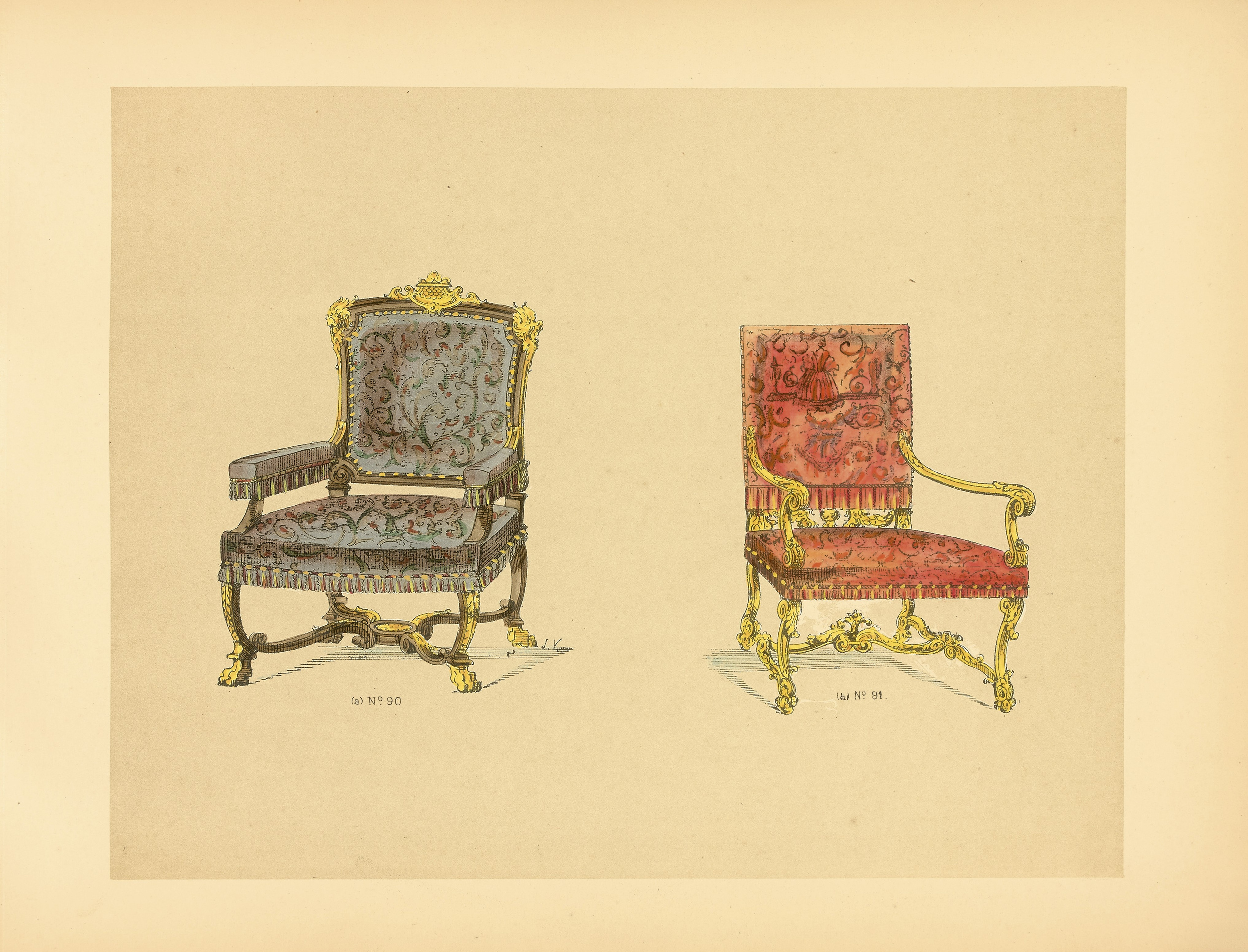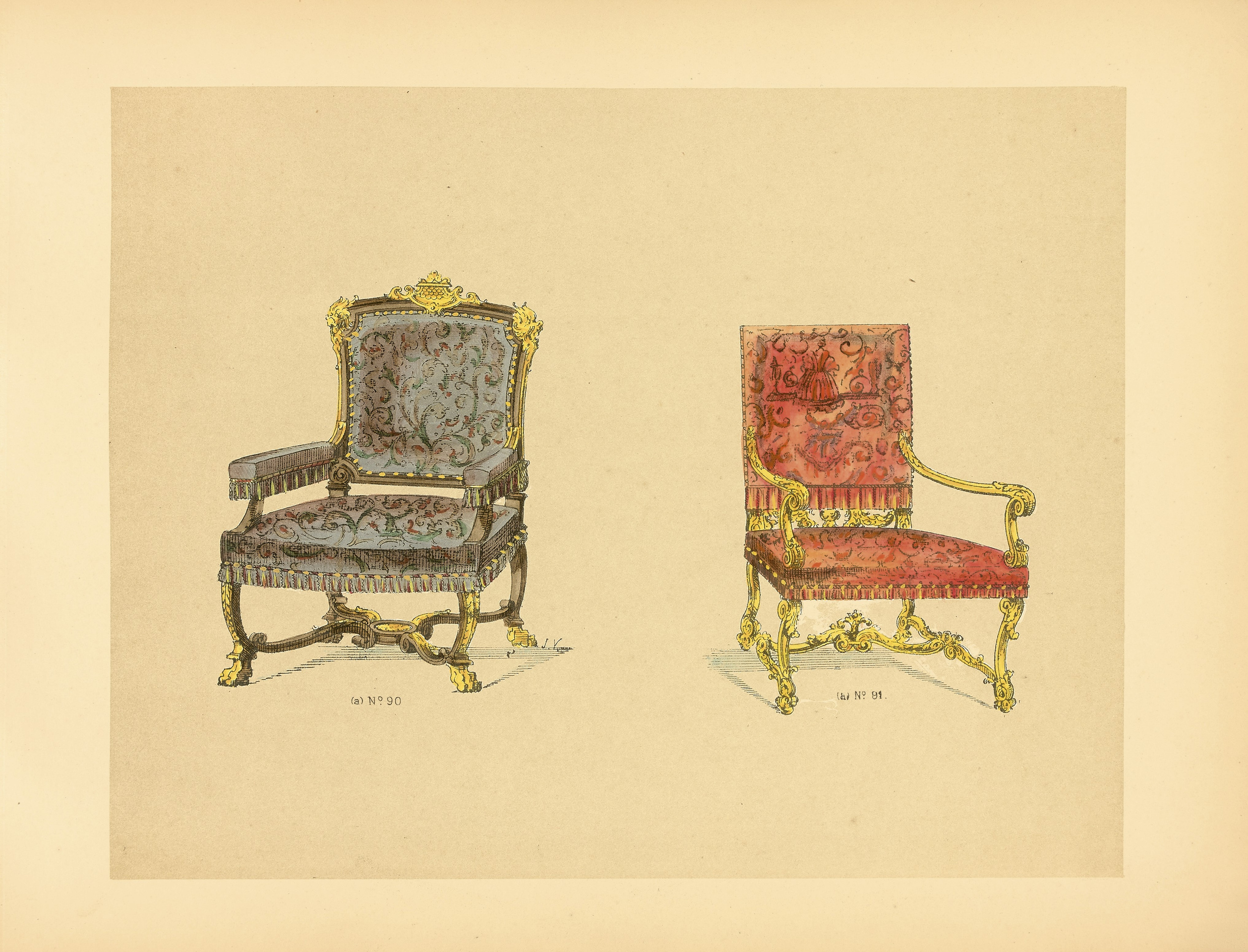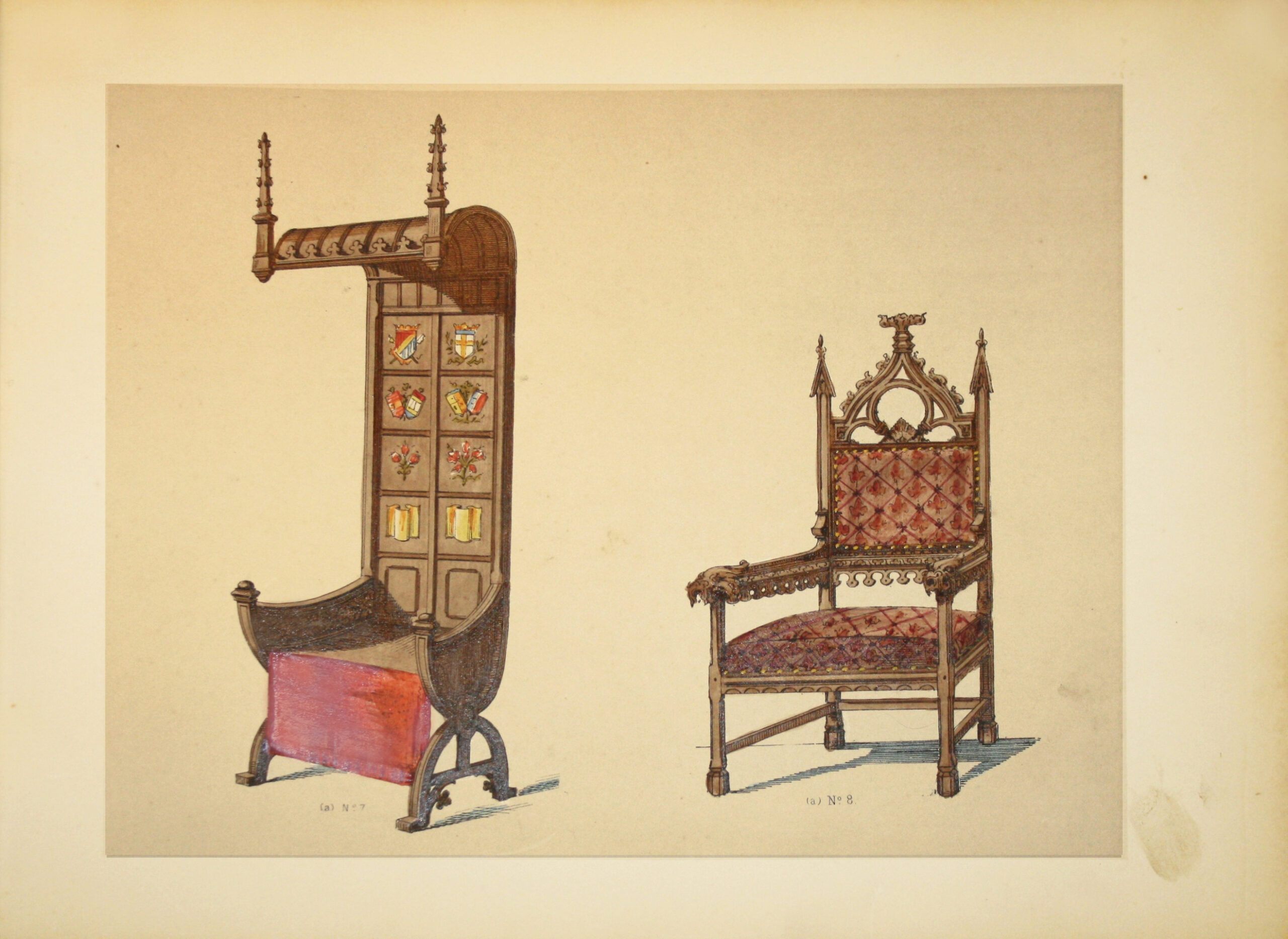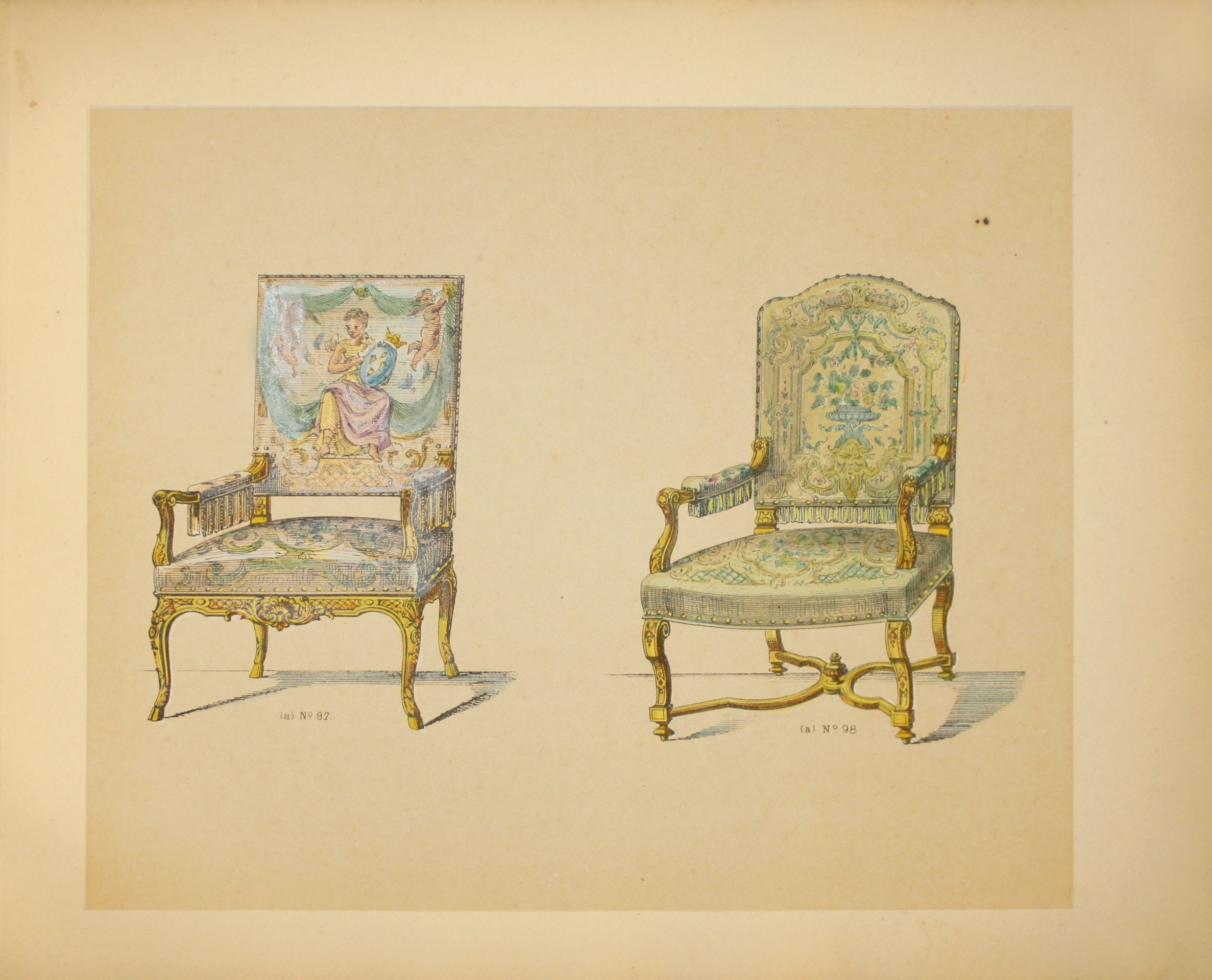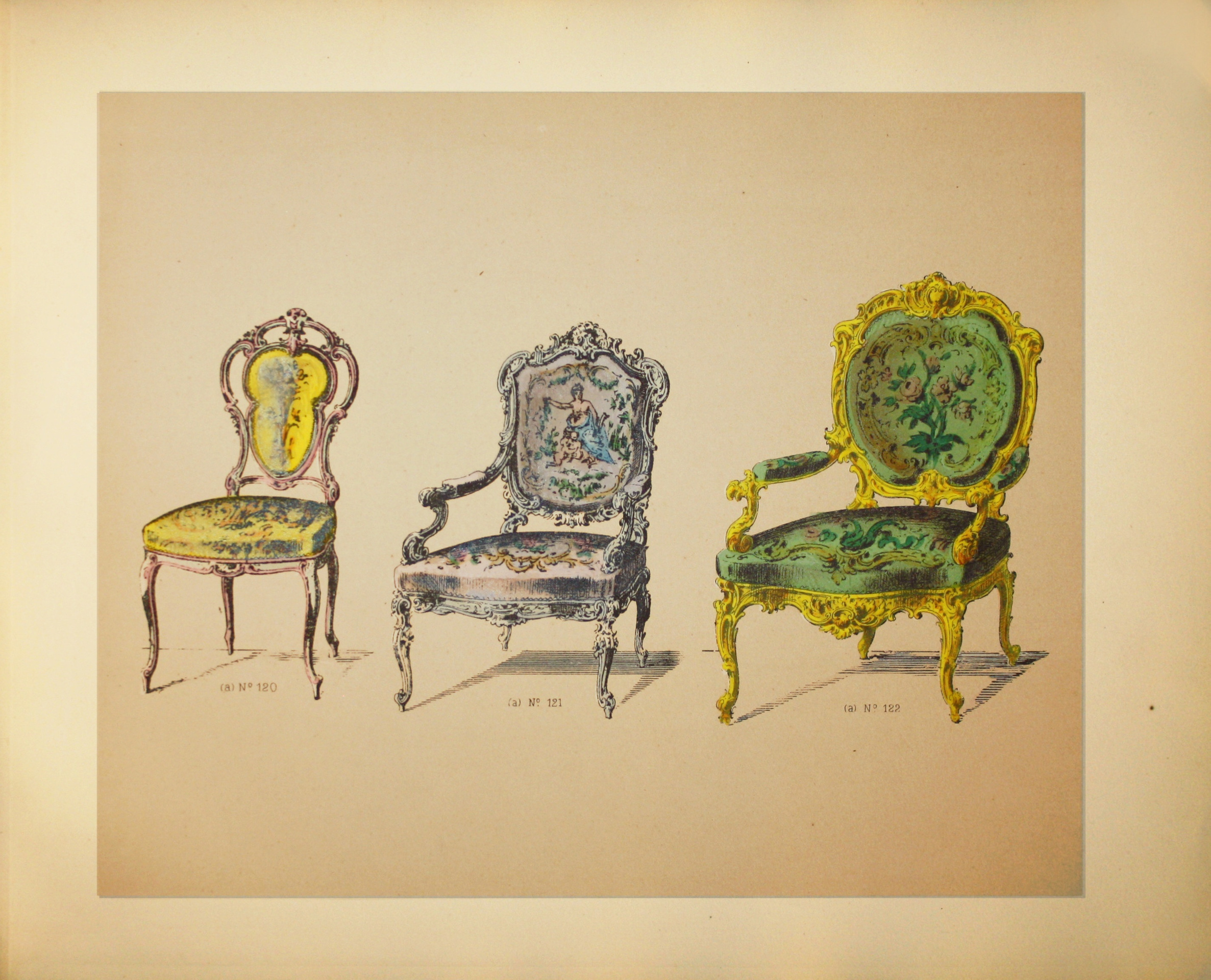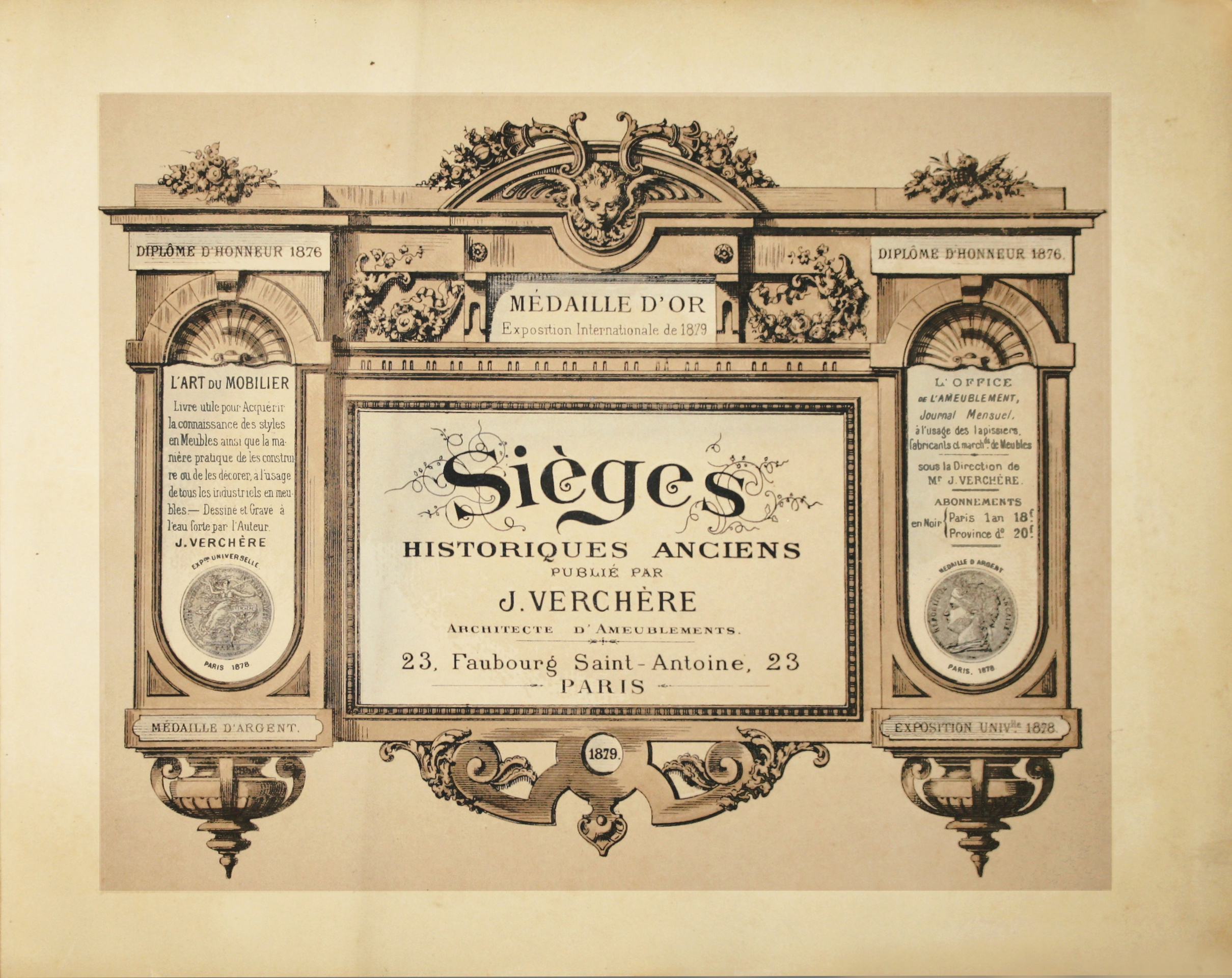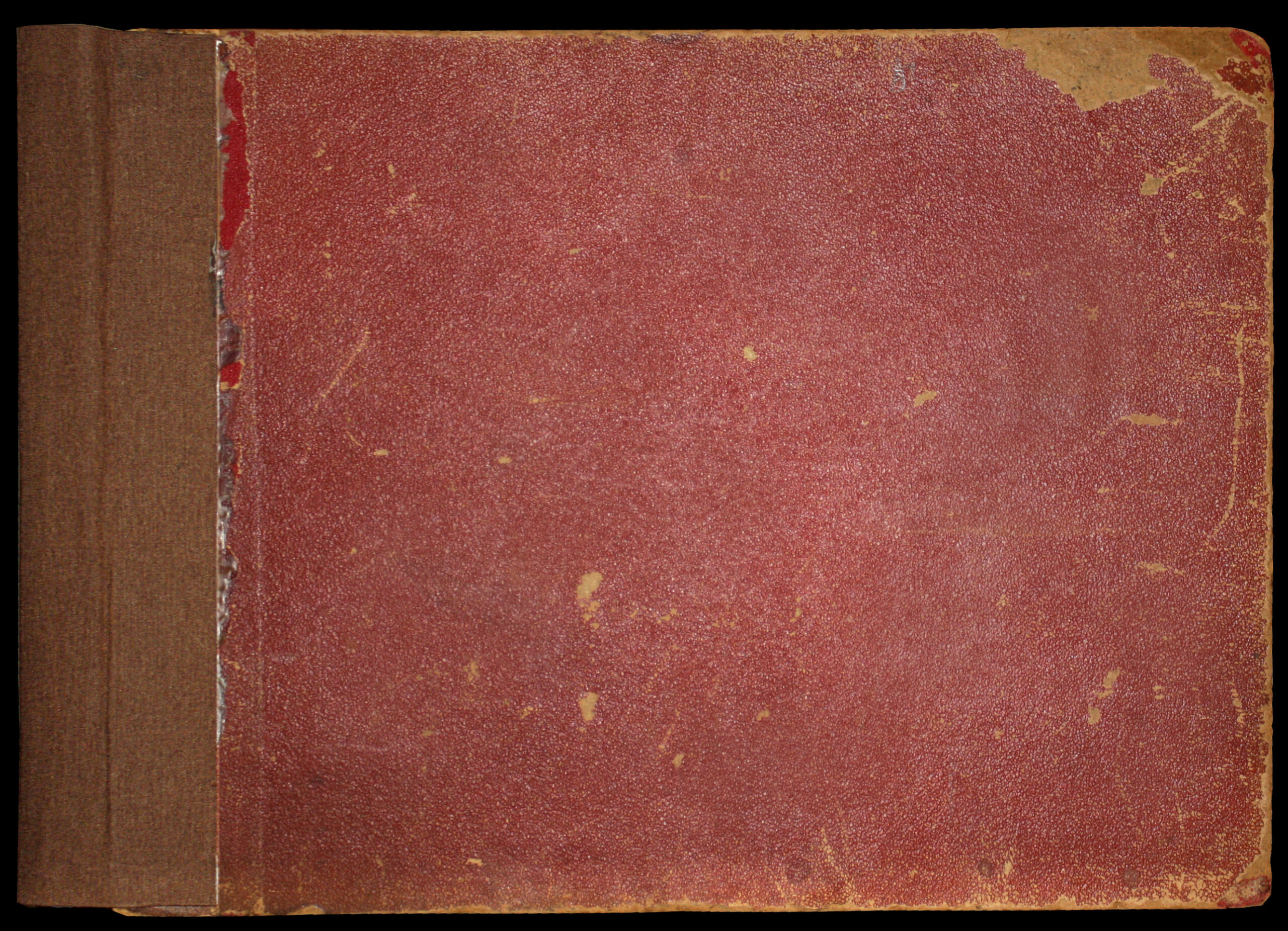Paris, J. Verchère, 1879.
Small oblong folio [271 x 357 mm] of 11 pages of summary presented in the form of a booklet, 1 frontispiece, 83 plates mounted on guards comprising 209 figures in colour (from figure 161, the numbering is handwritten). Summary partly misbound with a few tears and loss of paper, a few stains and minor tears on a few plates. Contemporary brown half-cloth, flat spine, a few scratches.
Very interesting collection dedicated by Jules Verchère to French seats and their evolution from the Middle Ages to the end of the 18th century, “a true mine of information for the art historian”.
The album consists of 209 figures of seats drawn by Jules Verchère, classified by chronological order and reunited in 83 plates.
“Jules Verchère (1849-1920) was what could be called a son of the Faubourg Saint-Antoine, the traditional district of Parisian furniture. In the middle of the last century, the Faubourg gathered no less than thirty thousand cabinet makers, wood carvers, upholsterers, seat carpenters, etc. constituting the main professions in furniture. Beside its intense economic activity, it held its reputation from the value of the furniture that was produced there. Generations of furniture workers had succeeded each other since the 17th century… Those exceptional products were still being produced in high-end furniture houses, worthy heirs of a tradition of savoir-faire, such as Damon, Schmitt, Millot and Collin, or Krieger…
Jules Verchère was up this manufacturing process. Trained cabinet maker and wood carver, he had acquired a great mastery of graphics and especially perspective…
Jules Verchère held a similar shop, where artisans, and more particularly the troleurs could come and buy models in order to produce the furniture which pleased the public. It seems that his shop changed several times of address… The first three addresses were in the heart of Faubourg Saint-Antoine, while the last one (at 73 rue de Rennes), located in a more upscale neighborhood, showed the social evolution of its owner who gained some renown and a comfortable nest-egg. This reputation was confirmed by Pierre du Maroussem, a law teacher from the University of Paris, who conducted a thorough investigation in the Faubourg. He indeed revealed that Verchère was one the most famous drawer of models and one of the most appreciated by the artisans of furniture from the capital. Unlike the famous maker of French furniture from the 19th century like Fourdinois or Grohé, Verchère shone more brightly for his efficiency and his confirmed sense of trade than by spectacular achievements that would have imposed him to the public and the critics. Thus, his aura remained confined in the circle of artisans…
Verchère published several collections including one ‘Recueil de sièges historiques’. The plates, in folio format and preceded by an ex-libris with the adorned initials of their author, were engraved with a chisel. All the styles were represented. The preface informs us a little bit better about Verchère’s working method: ‘In order for this work to meet the needs it claims to meet, Mr Verchère has used the public museums and private collections, and has made a scrupulous choice of the best models of each era… The ancient engravings were transferred on the spot by the drawers, who then were copying them in their workshops skillfully arranging them to give them a homogeneous presentation and scale, as well as a regular and personal line. We do not know if Verchère engraved his plates, but those could not be printed at more than a few hundred copies. This limited distribution explains why his reputation hardly exceeded the Faubourg.
Verchère’s collections form a mine of information for the art historian anxious to look for iconographic traces of furniture elements figuring in the notarial inventories established after the death of great characters from the Old Regime, or that where exhibited during retrospective events in the last century. In the ‘Recueil de sièges historiques anciens’, he shows the drawing of an audience chair with an X and gothic top, made in the 15th century by Jean de Bruges, or even a chair from the Louis XIV period represented by Meissonier. (S. Laurent, Jules Verchère, un dessinateur d’ameublement au dix-neuvième siècle).
Precious copy of which all 209 seats have been carefully and precisely colored by hand at the time.
